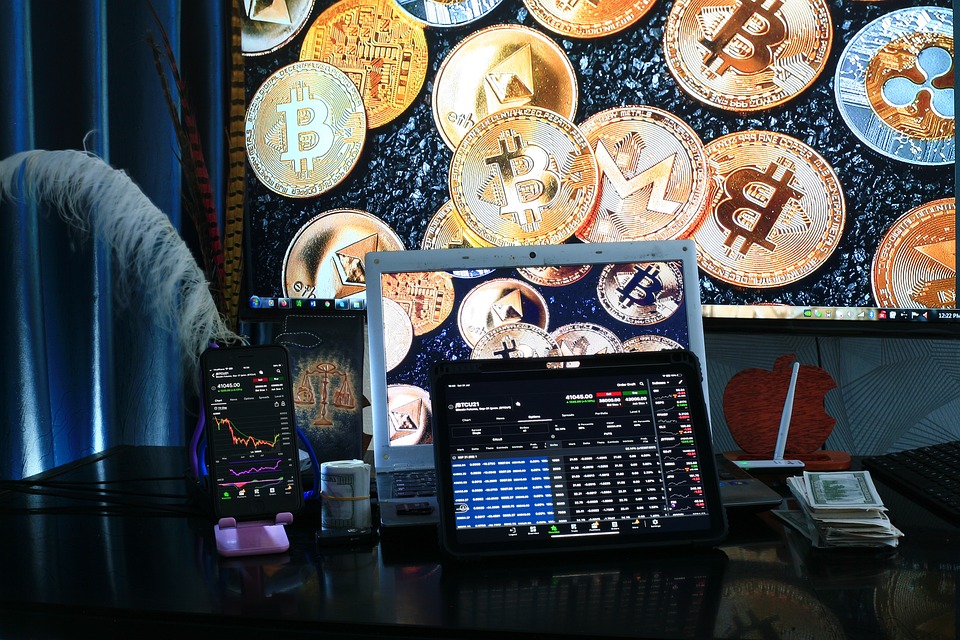The cryptocurrency market has seen explosive growth over the past decade, evolving from a niche interest to a global phenomenon. As digital currencies continue to gain mainstream acceptance, investors and enthusiasts alike are keen to understand which cryptocurrencies are leading the market. Here, we take an in-depth look at the top 10 cryptocurrencies, exploring their unique features, market performance, and potential future trajectories.
Bitcoin (BTC)
As the first and most well-known cryptocurrency, Bitcoin remains the market leader. Created in 2009 by the pseudonymous Satoshi Nakamoto, Bitcoin introduced the world to blockchain technology. It serves as a decentralized digital currency without a central bank or single administrator. Despite its volatility, Bitcoin is often seen as a “digital gold” and a hedge against inflation.
Ethereum (ETH)
Ethereum stands out for its smart contract functionality, which allows developers to build decentralized applications (dApps) on its blockchain. Launched in 2015 by Vitalik Buterin and others, Ethereum has become the foundation for a wide range of blockchain projects, including DeFi (Decentralized Finance) and NFTs (Non-Fungible Tokens). Ethereum’s transition to a proof-of-stake consensus mechanism with Ethereum 2.0 is highly anticipated.
Binance Coin (BNB)
Binance Coin, initially created as a utility token for the Binance cryptocurrency exchange, has grown significantly in its use cases. Beyond trading fee discounts on Binance, BNB is used in various applications on the Binance Smart Chain, a blockchain network that supports smart contracts and dApps.
Tether (USDT)
Tether is a stablecoin, a type of cryptocurrency designed to maintain a stable value relative to a fiat currency, in this case, the US dollar. USDT is widely used in the crypto market as a means of trading and transferring value without the volatility associated with other cryptocurrencies.
Cardano (ADA)
Cardano is a blockchain platform known for its focus on sustainability, scalability, and transparency. Founded by Ethereum co-founder Charles Hoskinson, Cardano uses a proof-of-stake consensus mechanism called Ouroboros. Its recent upgrades aim to enhance its smart contract capabilities and attract developers to build on its platform.
Solana (SOL)
Solana is celebrated for its high throughput and low transaction costs, making it a popular choice for DeFi projects and NFT marketplaces. Its unique proof-of-history consensus mechanism allows for fast transaction processing, which has helped Solana gain traction among developers and users alike.
XRP (XRP)
Developed by Ripple Labs, XRP is designed to facilitate fast and cost-effective cross-border payments. Unlike many cryptocurrencies, XRP does not rely on mining; instead, transactions are confirmed through a consensus mechanism. Ripple’s ongoing legal battle with the SEC has been a focal point for the XRP community.
Polkadot (DOT)
Polkadot aims to enable different blockchains to interoperate seamlessly. Created by Ethereum co-founder Dr. Gavin Wood, Polkadot’s relay chain connects various specialized chains, known as parachains, allowing them to communicate and share security. This innovative approach has positioned Polkadot as a key player in the blockchain ecosystem.
Dogecoin (DOGE)
Initially started as a meme, Dogecoin has gained a significant following due to its active community and high-profile endorsements, including from Elon Musk. While it lacks the technical sophistication of other cryptocurrencies, Dogecoin’s popularity and use as a tipping currency on social media platforms have kept it in the spotlight.
USD Coin (USDC)
Similar to Tether, USD Coin is a stablecoin pegged to the US dollar. Developed by the Centre consortium, which includes Coinbase and Circle, USDC is known for its transparency and regulatory compliance. It is widely used in the DeFi ecosystem and for digital payments.
Conclusion
The top 10 cryptocurrencies represent a diverse range of technologies and use cases, from digital gold and smart contracts to stablecoins and cross-border payments. As the market continues to evolve, these cryptocurrencies are likely to play a significant role in shaping the future of finance and technology. Investors and enthusiasts should stay informed about these market leaders to navigate the dynamic world of digital currencies effectively.




